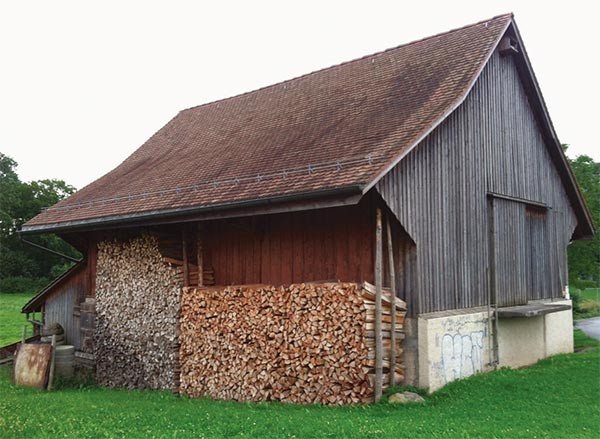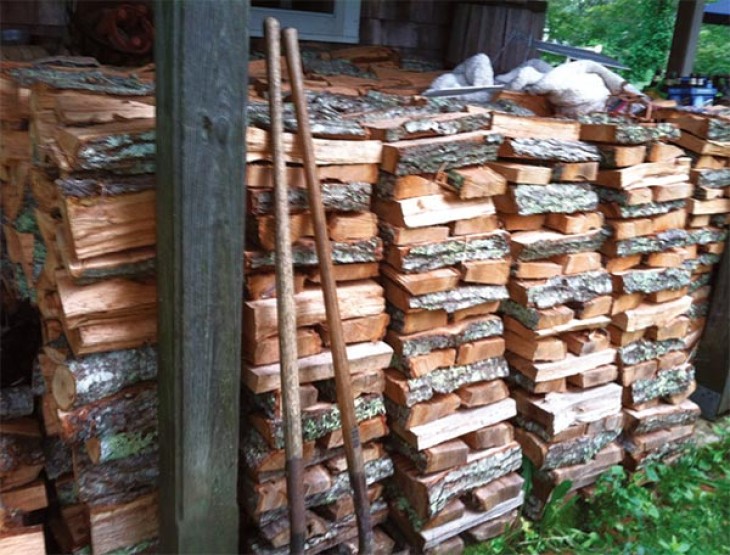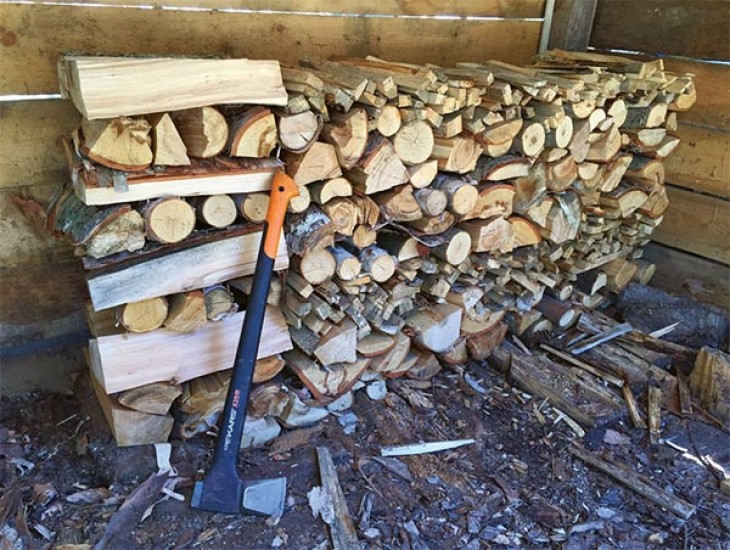
In 2013, The New York Times ran a story exposing a Scandinavian controversy that has divided Norwegians (and New Englanders) for eons. The question centered around the proper way to stack firewood. The Times story quickly made its way to social media, with woodsfolk declaring themselves either “bark-up” stackers, or part of the smaller, but equally enthusiastic, “barkdown” crowd.
At the risk of alienating fellow foresters, I’ll admit that I’m a bark-up guy. I like the way it locks the woodpile together, and also sheds water, especially on uncovered woodpiles. But bark orientation is only one factor and, admittedly, may be based more on tradition than function. However, there are other wood-stacking considerations that every firewood stacker should be aware of.
Location: Three main factors control the rate at which your wood dries: sun exposure, wind exposure, and time. Stack your woodpile so that it faces south. In experiments on my own homestead I’ve found that stacked and covered (but not fully enclosed) firewood can dry twice as fast with good southern exposure as firewood in heavily shaded or enclosed areas. If your woodpile needs to be located in a shaded area, orient it so that the prevailing winds blow toward the face of the woodpile, not the end. To compensate for blowing rain/snow, build a deep overhang on your woodshed. As for time, many people use one year as the standard length of time to season their firewood. In practice, I’ve found that an additional year of seasoning pays big dividends, especially on small-diameter stove wood that’s burned without splitting. (Image 1)
Build it Strong: Strong corners make strong piles. Build your ends as you stack, with each course staggered in toward the center of the stack about an inch. If you’re stacking wood inside a woodshed, “lean” each row back a bit so that your woodpile doesn’t tumble forward. If you have both split and unsplit wood in your woodpile, mix them as you stack to avoid a cascade of rolling round wood.
Woodpile Density: Should you stack your woodpile loose or tight? If your objective is to dry the wood as quickly as possible, a loose woodpile will allow for more air circulation. On the other hand, if space is at a premium, split and stack your wood to maximize capacity. One method is “slabbing,” which allows about 20 percent more wood in the same area as a conventional loose stack. (Image 2)
Plan Ahead: We’ve all rummaged through the woodpile looking for just the right piece of wood, or perhaps kindling to get the fire going on a wet day. One way to ensure you always have the appropriate mix of kindling and fuel wood is to use the sandwich stacking method, where kindling is layered into the woodpile every three rows or so. (Image 3) This means that each armload of firewood has an appropriate mix of wood to both start and maintain the fire.




Discussion *